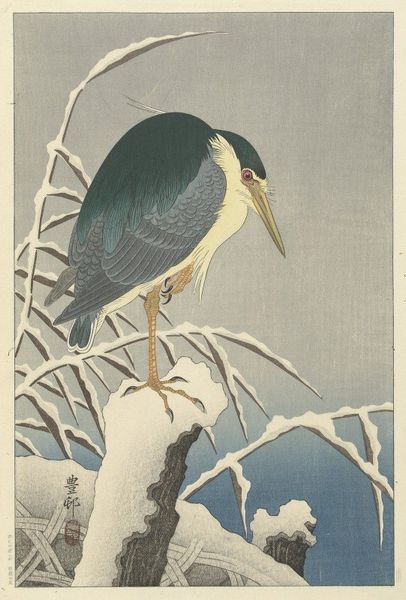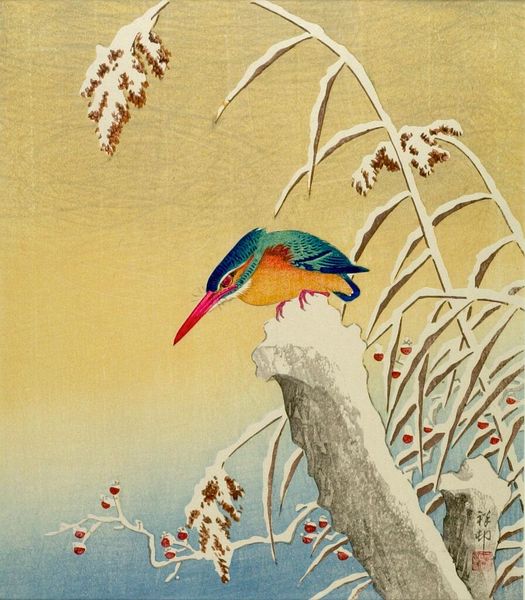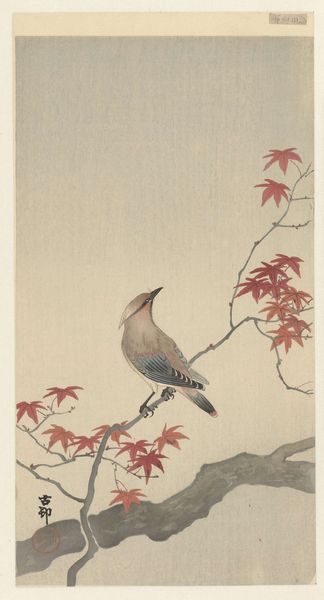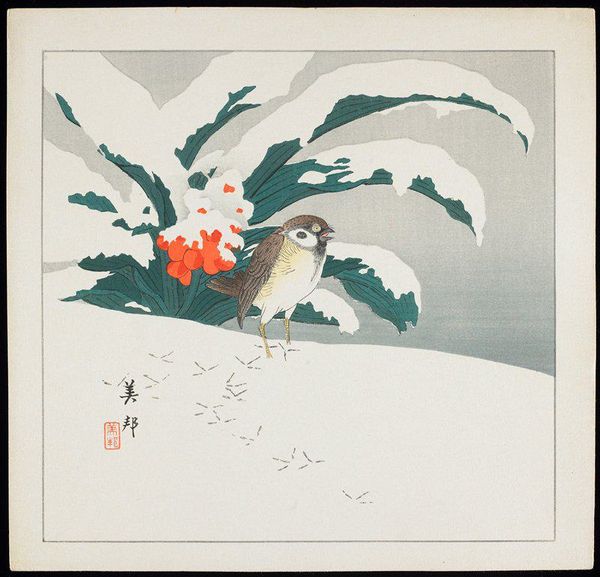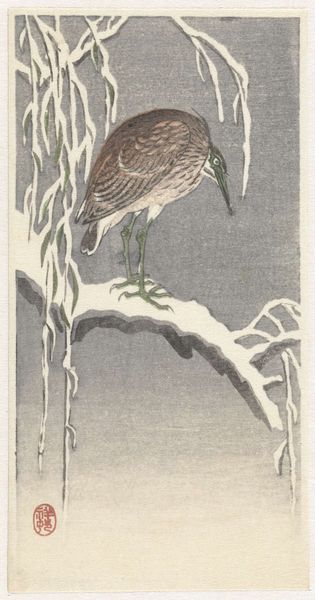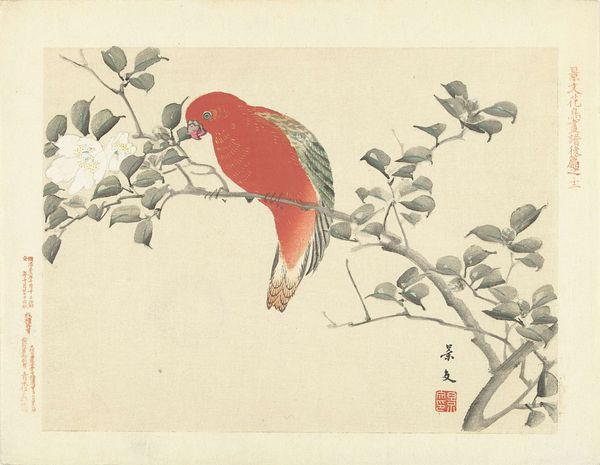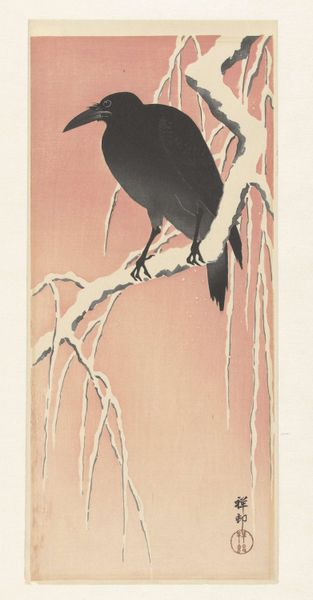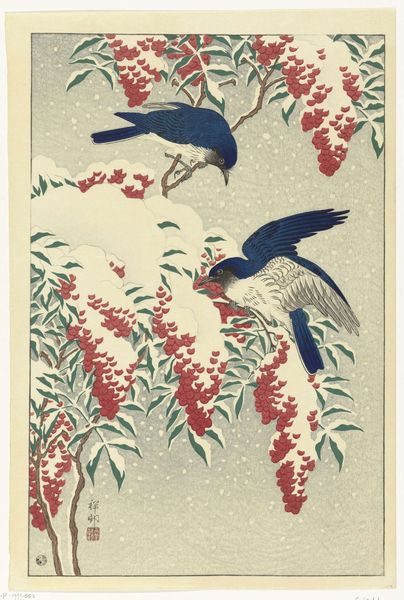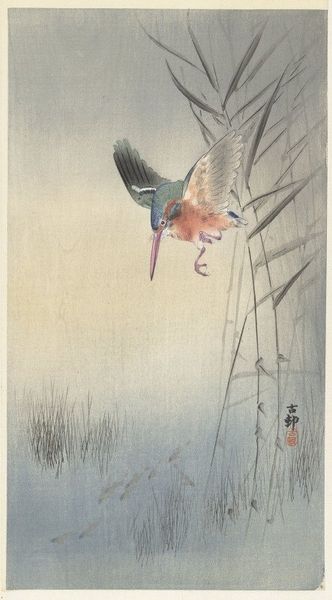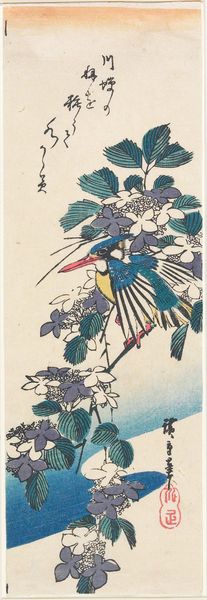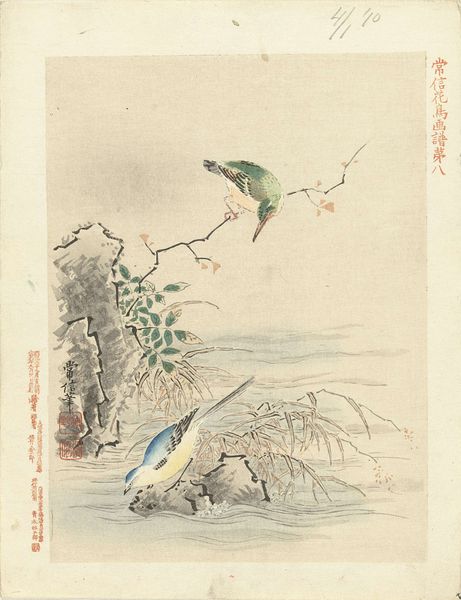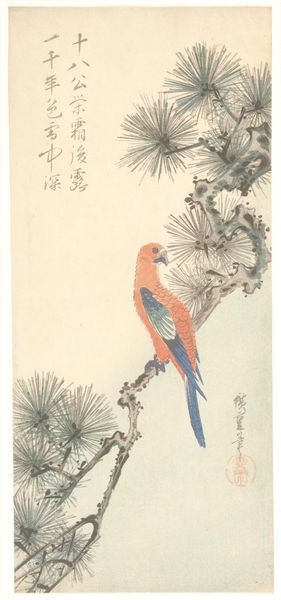
Dimensions: height 275 mm, width 240 mm
Copyright: Rijks Museum: Open Domain
Curator: Welcome! We are standing before Ohara Koson's "Kingfisher in the Snow," a striking print made sometime between 1925 and 1936. The Rijksmuseum is fortunate to have this serene artwork. Editor: Immediately, the palette strikes me. The subdued gold sky offset by the pale blue ground reminds us that survival is hard. Curator: Precisely! Notice how the artist deftly utilizes line and block to suggest depth and texture. The layering creates an illusion of three-dimensionality, while the flat planes ground the artwork. Editor: I see the delicate dance of power and vulnerability. Birds have often been represented as symbols of freedom, but there are implicit tensions here in this avian figure trapped amid severe weather. One cannot disassociate this image from global environmental challenges and threats to our biodiversity, right? Curator: True. But consider, too, the superb formalism. Koson’s choices—the diagonal thrust of the snowy branches, the carefully placed signature cartouche, the delicate rendering of the kingfisher's plumage. These choices make the piece work! Editor: Form undeniably matters. However, art doesn't live in a vacuum. Considering this print within the context of early 20th-century anxieties can provide a modern resonance. Japan experienced seismic changes during the early twentieth century including industrial expansion that caused pollution and also led to increased socioeconomic inequity. Perhaps nature became both an inspiration and place of sanctuary during great societal turmoil? Curator: Yes, the artist found that balance. The precision reminds us of Ukiyo-e traditions while he imbues it with fresh perception and a unique expressivity. Editor: Ultimately, this is more than mere documentation—it is an appeal for recognition. By immortalizing these creatures and botanical subjects through painting or prints, artists give us reminders of their fragility in today’s tumultuous environment. Curator: It's both about the inherent structure of the work itself and the intersectional relationships of artist to context, to society and beyond! Editor: Beautifully said, bridging technique and circumstance, isn't it? Curator: It truly is, bridging meaning.
Comments
No comments
Be the first to comment and join the conversation on the ultimate creative platform.

